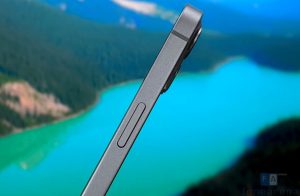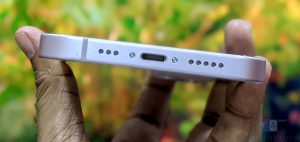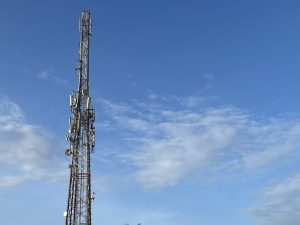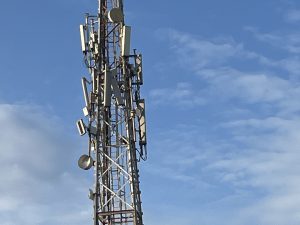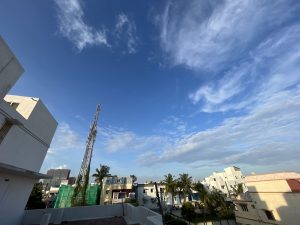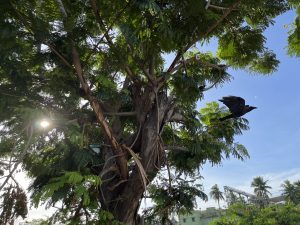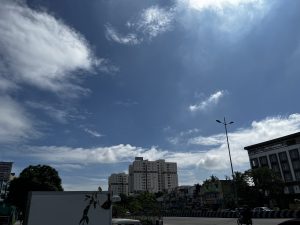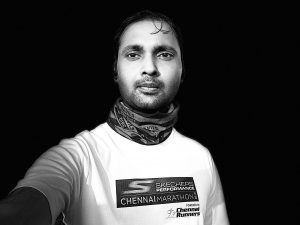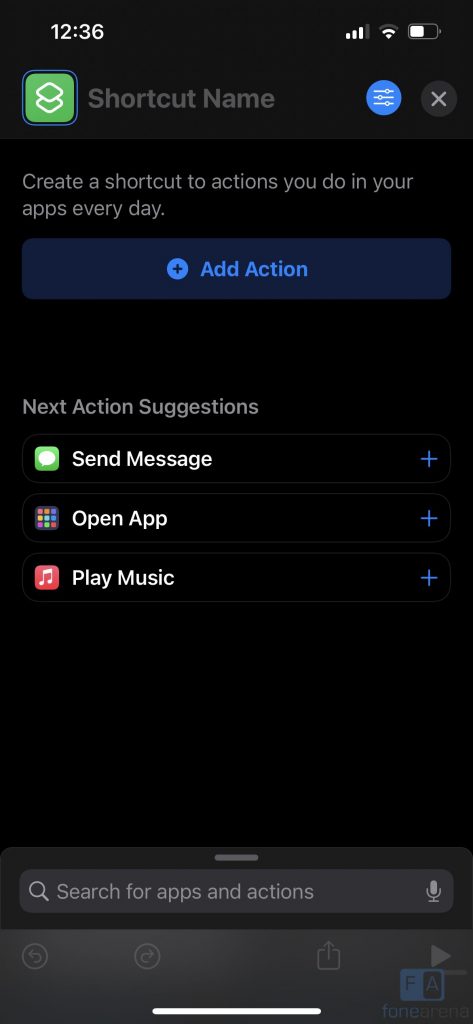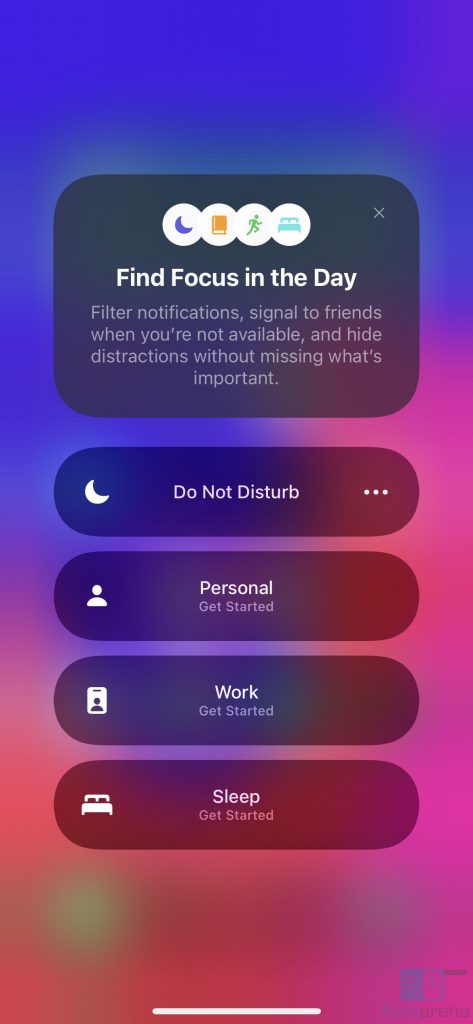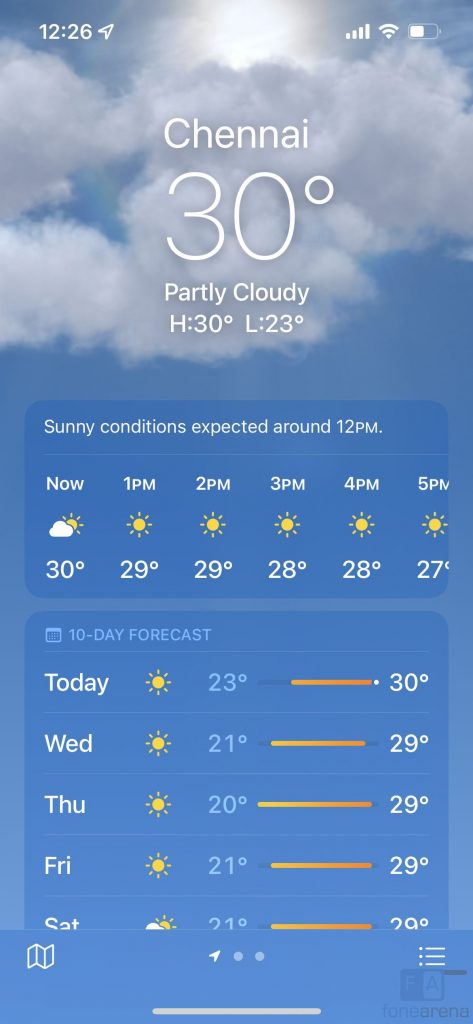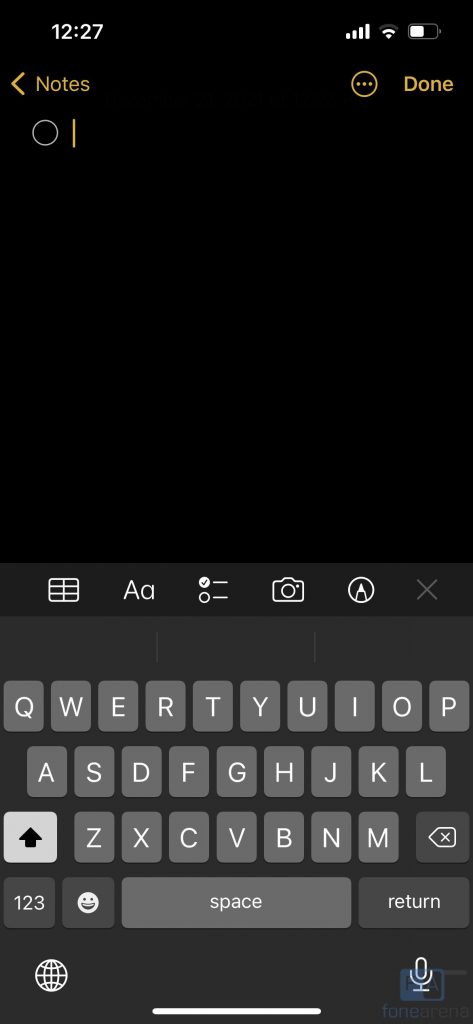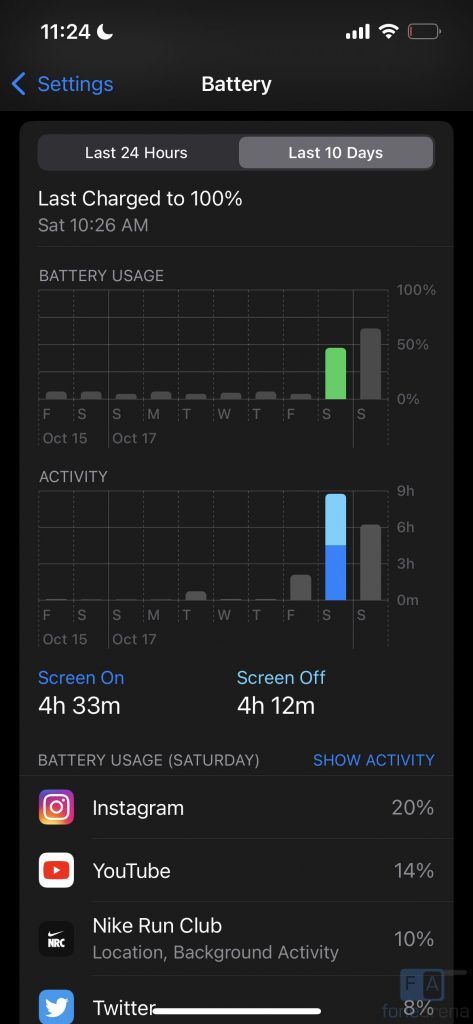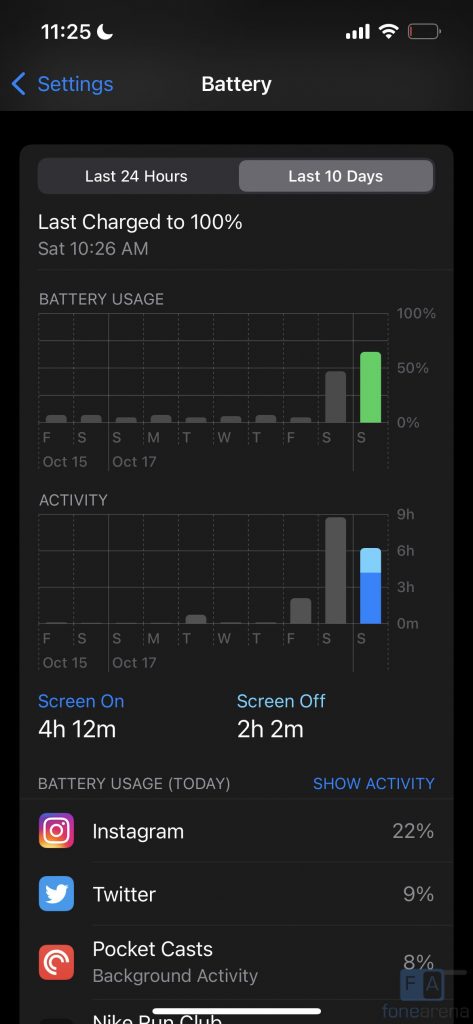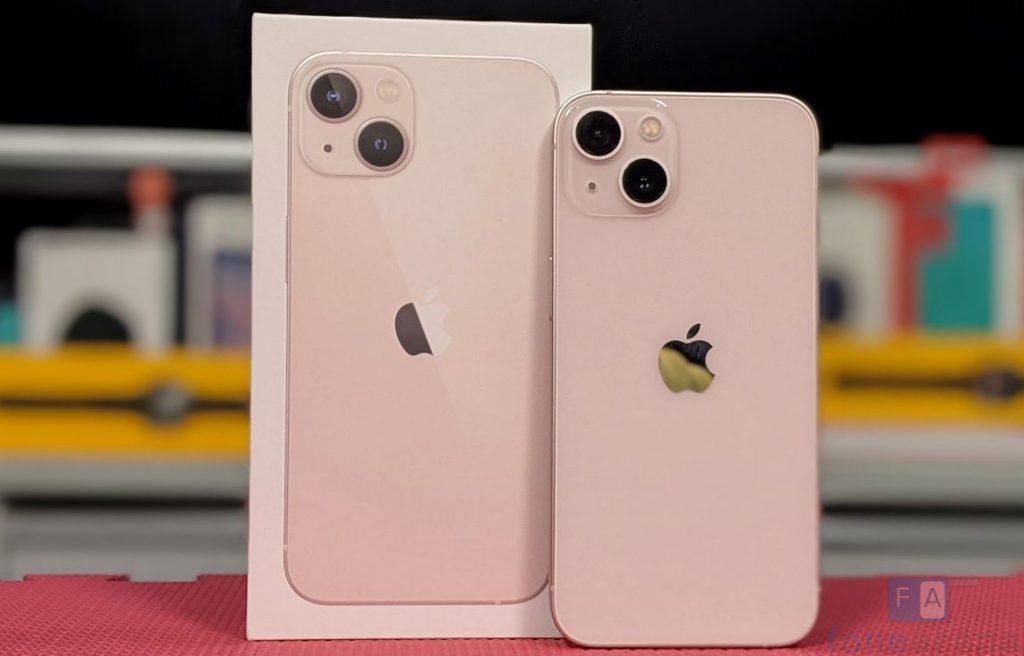
Apple launched the iPhone 13 series in September this year as the successor to iPhone 12 series. The iPhone 13 has a better display with a smaller notch, better camera, improved battery life, and lots more. I have been using the phone for 3 months now. Is this the best upgrade to the iPhone 12? Let us dive into the review to find out.
| Box Contents |
| Camera |
| Battery Life |
| Conclusion |
Box Contents
- Apple iPhone 13 512GB in Pink colour
- USB Type-C to Lightning cable
- SIM ejector tool
- Apple sticker and documents
Display, Hardware and Design
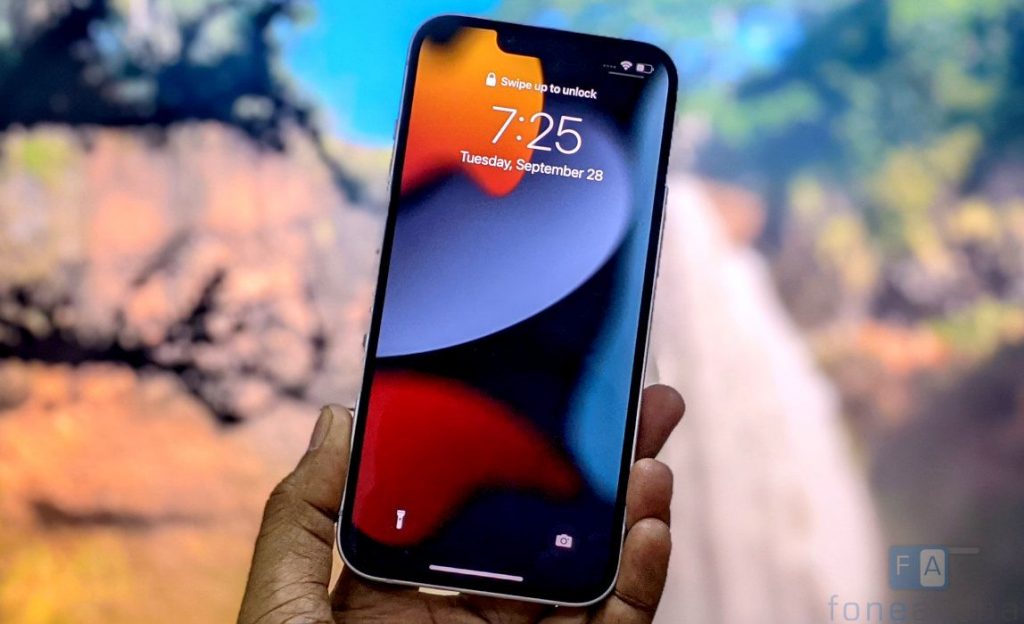
The iPhone 13 has the same 6.1-inch OLED Super Retina XDR display, with a resolution of 2340×1080 pixels and 476ppi. It has support for HDR and Dolby Vision, and the company says that the display is 28% brighter outdoors at 800 nits, with higher peak brightness for HDR at 1200 nits compared to the predecessor. I did not have any issues using the display outdoors and when watching HDR content. It also has True Tone adjustments and Wide Color. Since it has a Taptic Engine, you get haptic touch feedback.
The iPhone 13 doesn’t have the 120Hz high refresh rate option, so you have to spend more and get the Pro model, if you need a high refresh rate screen. It has the Ceramic Shield protection that was introduced in the iPhone 12. Apple says that this has 4x better drop performance compared to normal protection, thanks to a new high temperature crystallisation step that grows nano-ceramic crystals within the glass matrix.
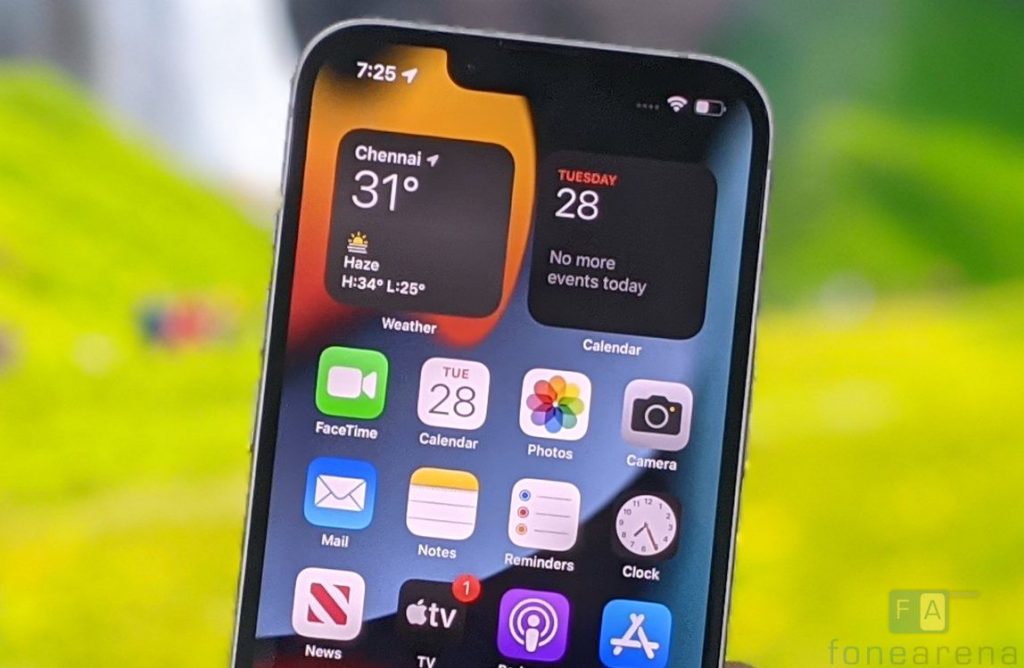
The main change in the iPhone 13 series is the smaller notch compared to the predecessor since Apple has merged the flood illuminator and dot projector of the FaceID system into one component, and by moving the earpiece cutout up to the edge. It still has the same 12MP TrueDepth front camera with f/2.2 aperture.
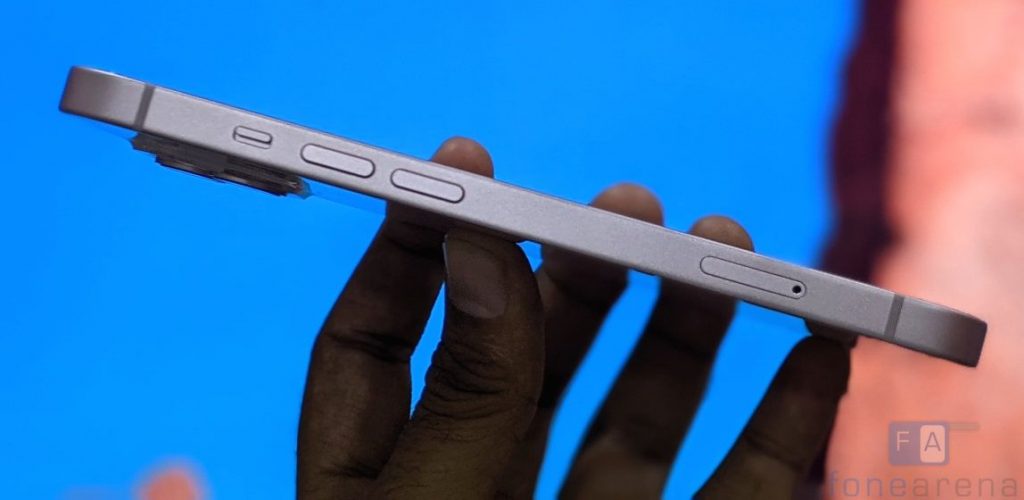
There is no change in button placements compared to the iPhone 13, so you still get a Ring/Silent button next to the volume rockers. As you can see, the phone has an aluminum frame that offer a matte finish, so it doesn’t attract fingerprints easily. You can also see the antenna cutouts.
The power button is on the right side, and the lightning port is on the bottom, along with the speaker grill and the microphone port on either sides. The phone has IP68 water resistance (6 meters for up to 30 minutes) ratings.
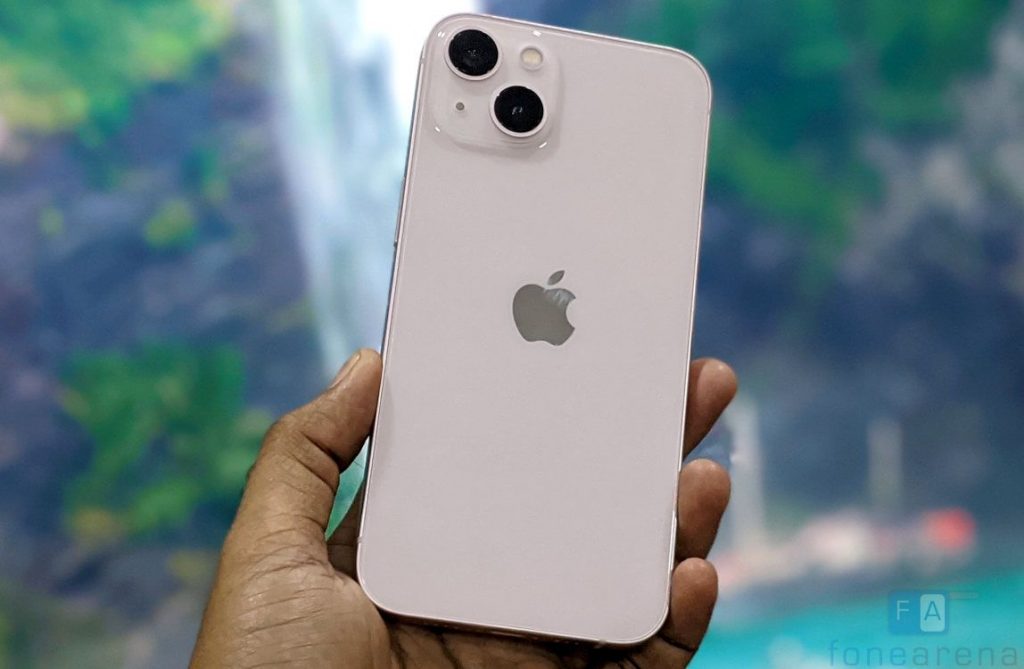
Even though the iPhone 13 has the same 6.1-inch screen as the iPhone 12, the dimensions are slightly different, so it is thicker at 7.65mm compared to 7.4mm, and there is also a bigger camera bump, so you can’t use the same iPhone 12 case for the iPhone 13.
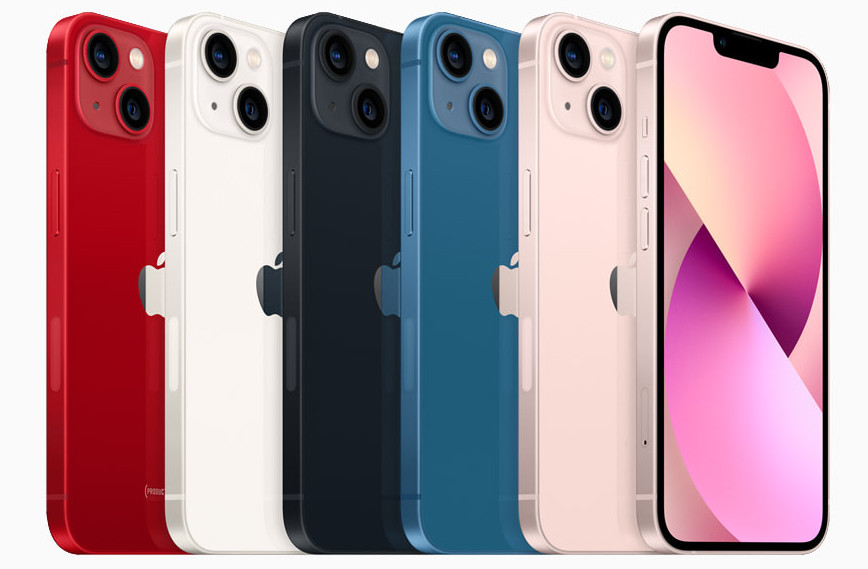
It still has the sharp edges and is protected by a tempered glass made by Corning. It comes in Pink, Blue, Midnight, Starlight, and (PRODUCT) RED colours. Since it has a bigger battery compared to the iPhone 12, it weighs 173 grams, making it 10 grams heavier.
Camera
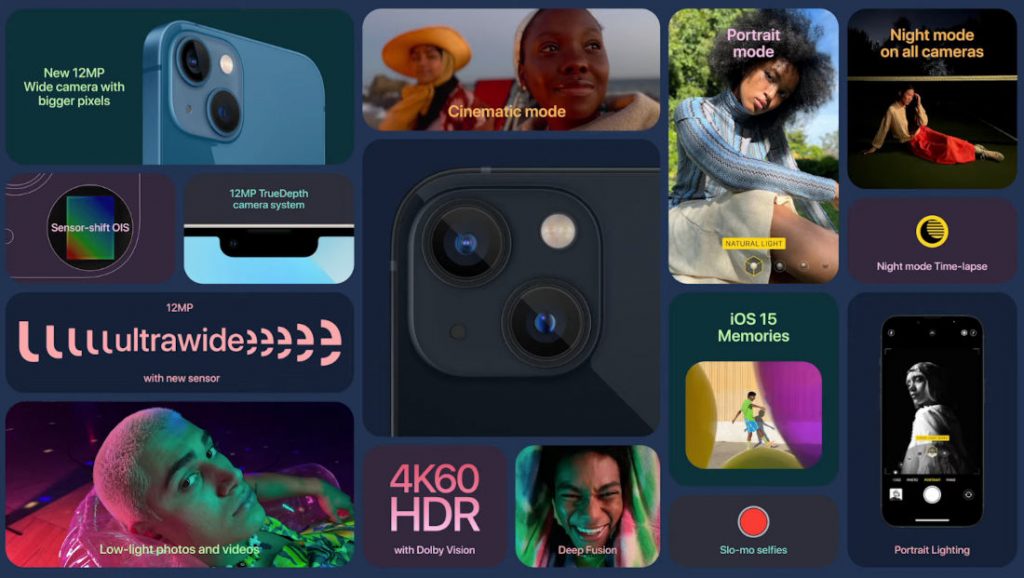
The iPhone 13 has an improved 12MP (f/1.6) main camera with 1.7 µm pixels, and the company says that it is the biggest sensor ever in an iPhone dual-camera system. The Sensor-shift OIS — a technology introduced in iPhone 12 Pro Max is now available in the main camera for both iPhone 13. There is a 12MP 120° ultra-wide (f/2.4) secondary camera.
You also get Night Mode feature with manual adjustment on all the cameras. You get a night mode icon automatically when the phone detects a low-light scene. It automatically suggests the the seconds, but can change the long exposure, which can be set up to 30 seconds. It also has the Deep Fusion option that was first introduced in the iPhone 11 series. This uses the advanced image processing system that uses the A15 Bionic Neural engine to capture images with dramatically better texture, detail, and reduced noise in lower light.
The Camera UI is same as the older models, including option to choose from photo, video, portrait, pano, timelapse, slo-mo and new cinematic mode. For photos, you get a new Photographic Styles filters (Standard, Rich Contrast, Vibrant, Warm, and Cool). iPhone camera still doesn’t have a pro model to adjust the ISO, shutter speed and other things manually. The iPhone 13 also lacks RAW mode. There are third-party apps to get these features, but most are paid.
Daylight shots from the 12MP camera came out well with a lot of details, vibrant colours and the dynamic range is brilliant. 2X is decent, but once you zoom after that the quality degrades since it is digital zoom. The portrait mode is brilliant with perfect edge detection. The ultra-wide shots from the 12MP camera is also brilliant, and has the same amount of details, colours and dynamic range as the main camera.
Low light shots are good as well. If you enable the night mode, the images are slightly brighter with better dynamic range, but the images are softer without much colours. Even the ultra-wide camera supports night mode, but without night mode, images look dull since the aperture is less.
Images from the 12MP selfie camera are good as well with brilliant dynamic range and colours, but it uses the same sensor as the iPhone 12. In addition to normal wide images, which has a 23mm equivalent FoV, there is a zoomed-in model, but this crops in to 7MP or 30mm FoV. The portraits are good as well with brilliant edge detection.
Check out the camera samples.
All the iPhone 13 models feature Cinematic mode with depth effect with automatic focus changes. The focus can be changed during and after capture, and you can also adjust the level of bokeh in the Photos app and iMovie for iOS, and iMovie for macOS and Final Cut Pro (requires macOS Monterey).
The Cinematic mode records in Dolby Vision HDR. It also offers HDR video recording with Dolby Vision — from capture to editing and sharing for 4K up to 60 fps on all cameras. However, the ProRes, an advanced video codec, is available only in the iPhone 13 Pro series. It also has slow motion video recording at up to 240fps in 1080p.
Video quality is brilliant from all the three cameras. With Dolby Vision enabled, you get excellent dynamic range, contrast and true colours in videos. Videos have wide stereo audio support at 192kbps for spatial sound. The cinematic mode works just like Portrait mode that uses AI to detect the face or object to automatically blur things in the background, but the edge detection is brilliant compared to portrait video in other Android phones. Cinematic mode videos are recorded in 1080p resolution at 30fps.
Check out the video samples.
Software and UI
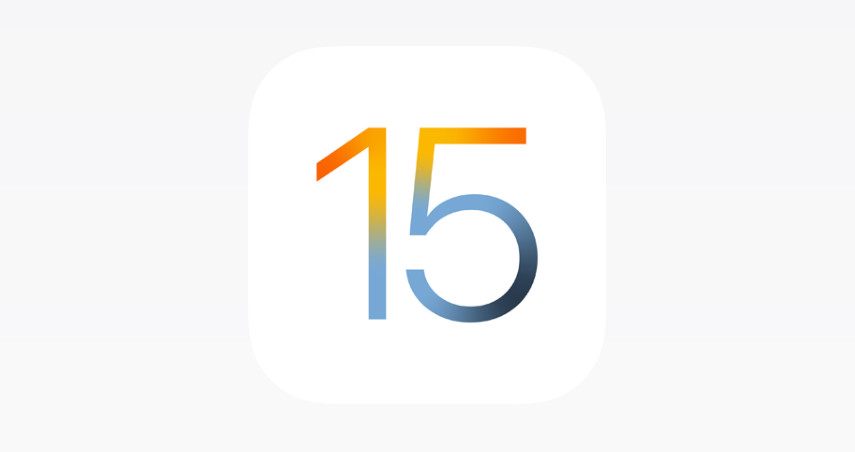
The iPhone 13 was launched running iOS 15 out of the box, but the company has since released the iOS 15.0.1 and iOS 15.0.2 updates for bug fixes, iOS 15.1 that added the most expected SharePlay feature that lets you view and enjoy content with your friends over a FaceTime call.

iOS 15 also brings Spatial audio, Voice Isolation, Portrait mode and more features to FaceTime. The Grid View lets you see up to six faces in the grid at a time in your Group FaceTime calls. For the first time, you can make a unique FaceTime web link to connect with others who don’t have FaceTime, and the link opens in a web page, so it can be accessed even by a Windows or Android users.
Apple also released the iOS 15.1.1 update after that to improve the call drop performance on iPhone 12 and iPhone 13 series, and the most recent iOS 15.2 update added Apple Music Voice Plan, Legacy Contacts for managing your data after you die, and it adds improvements to Find My, Hide My Email, and more.
Shortcuts are new pre-built actions that let you overlay text on images or gifs, plus a new collection of games lets you pass the time with Siri. This is more like IFTTT.
Focus mode which extends across the Apple ecosystem is a new way of filtering notifications based on what a user wants to focus on ‘in that moment’, like Work Focus, Personal Focus, or Fitness Focus. Notifications in iOS 15 have also been improved with a new feature called notification summary, and iOS 15 adds support for on-device intelligence for the Live Text feature.

However, only the Gmail app I use have ‘mark as read’ and delete options directly from the notifications. Wish other apps like Messages, WhatsApp and Telegram get this feature since I have to open the app every time to mark it as read or delete.
Live Text that works in Photos, Screenshot, Quick Look, and Safari and in live previews with Camera lets you copy and paste, lookup, and translate, thanks to Apple Neural Engine. Spotlight in contacts, movies, and TV shows offer rich results brining together all the information you’re looking for in one rich result. iOS 15 also brings redesigned Maps and Note apps.
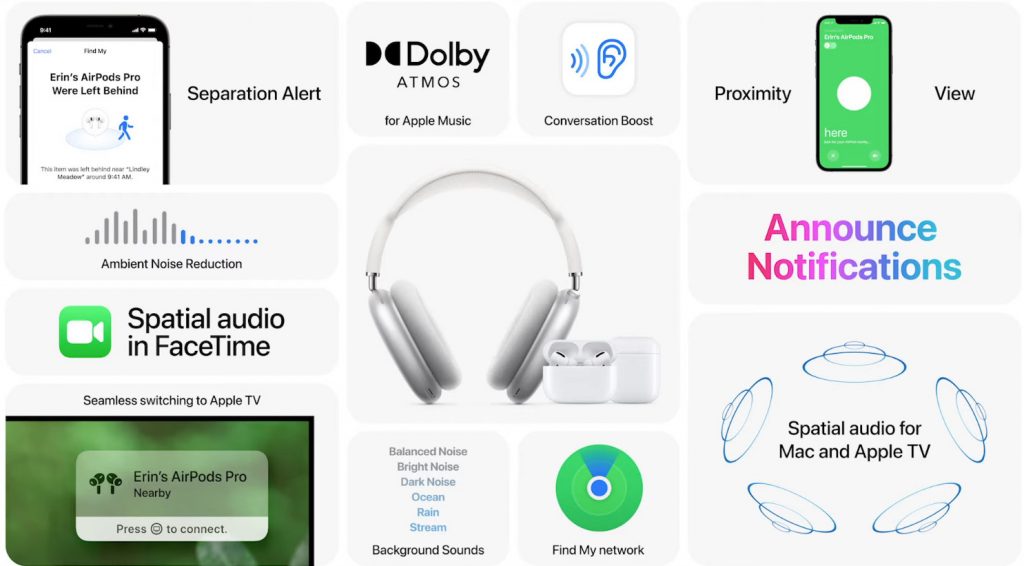
iOS 15 also adds tons of improvements for Siri, HomeKit, Find My, Translate, Apple TV and more, but Apple can still improve it in the future.
Face unlock

FaceID in the iPhone 13 combines flood illuminator and dot projector into one component, so it is smaller. It is quick to unlock the phone, and it also works in the dark. However, if you are wearing a mask, it doesn’t recognize your face, so you need to enter the pin every time or remove the mask.
This is not a problem if you have an Apple Watch since, Apple earlier this year added a feature that allows users to unlock their iPhone by using Face ID with reduced security, as long as they are wearing an Apple Watch. Apple moved to FaceID from the big physical TouchID fingerprint sensor that is still present in its iPhone SE series. Based on rumours, Apple could bring under-screen Touch ID support only in the 2023 iPhones.
Music and Multimedia
Apple Music got Spatial audio support earlier this year with dynamic head tracking in Apple Music that offers an immersive experience to Dolby Atmos music, but it only works with AirPods Pro and Airpods 3rd Gen. I have been using other TWS earbuds with the iPhone, and haven’t faced any issues in terms of audio quality or connectivity. Most companies offer companion app for iPhone.
The iPhone 13 has the same speakers as the iPhone 12, one at the bottom, and the other, inside the earpiece grill. The speakers also support spatial audio and Dolby Atmos. Audio quality is brilliant without any distortion even in full volume, and clear bass and highs. This is better than any other smartphone in the price range.
Dual SIM and Connectivity
Even though the iPhone 13 has a single physical SIM slot, it also comes with eSIM support, so that you can use it as a secondary SIM. It has 5G (sub‑6 GHz) and Gigabit-class LTE support.
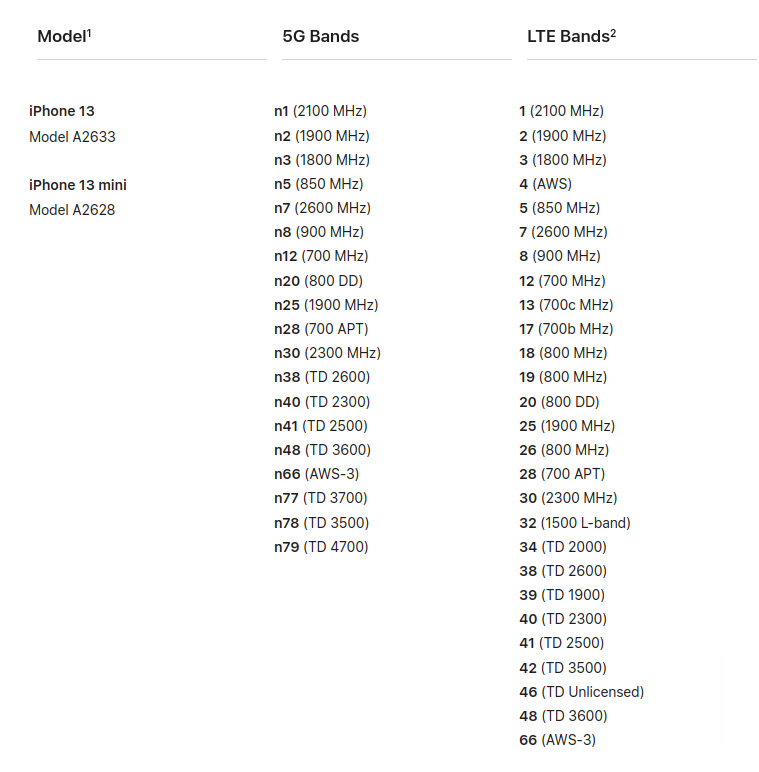
It supports several 5G and LTE bands, so you can use the phone in several countries. At the launch, Apple said that the iPhone 13 series feature a customized hardware design packing more 5G bands, allowing it to work in more places on 5G for greater coverage and performance.
It also supports 802.11ax Wi-Fi 6 with 2×2 MIMO, Bluetooth 5.0, Ultra Wideband chip for spatial awareness, NFC with reader mode and GPS with GLONASS.
According to the Apple website, the iPhone 13 (Model A2633, A2634, A2645) has a head SAR of 1.18 W/kg (over 1 g) and body SAR of 1.19 W/kg (over 1 g) which is slightly high compared to some mid-range phones, but it well under the limit in India which is 1.6 W/kg (over 1 g).
Performance and Benchmarks

The iPhone 13 is powered by the A15 Bionic 5nm Chip with nearly 15 billion transistors, compared to 11.8 billion transistors in the A14 Bionic. It has a new 6-core CPU with two high-performance cores and four high-efficiency cores which the company says is 50% faster than the competition, and the fastest in any smartphone.
The new 4-core GPU in the iPhone 13 is up to 30 % faster than the competition, says Apple. The iPhone 13 Pro and Pro Max models feature a five-core GPU, which promises 50% faster performance than the competition. It has a new 16-core Neural Engine that is capable of 15.8 trillion operations per second, compared to 11 trillion operations per second in the A14 Bionic.
The performance is smooth with any lags, and the faster GPU offering good gaming performance compared to the iPhone 12. However, the iPhone 13 Pro models have slightly better gaming experience, thanks to the extra GPU cores and a high refresh rate screen. Check out the synthetic benchmark scores below, in which it topped the charts.
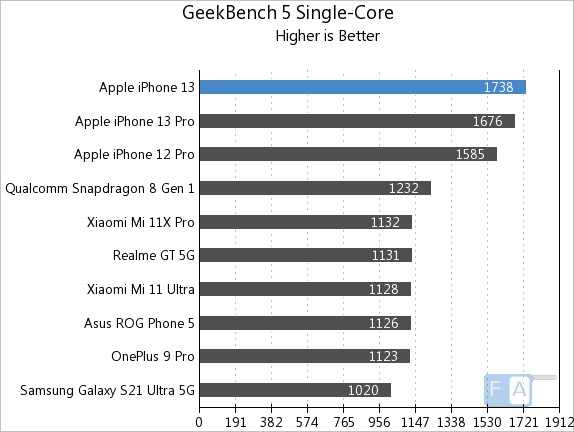
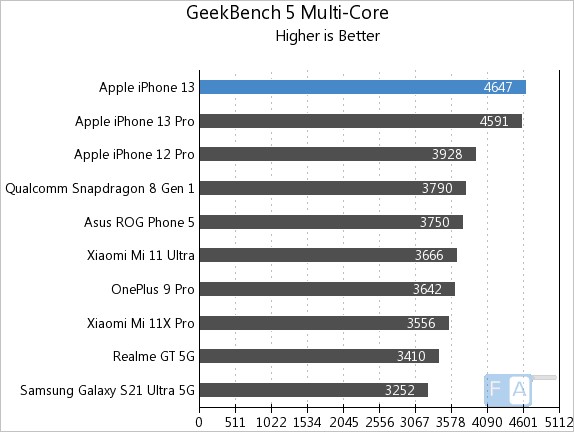
I did not face any heating issues when gaming, but the battery drained quickly when gaming, which is common in all the iPhone models.
Battery life
Coming to the battery, the iPhone 13 packs a 3227mAh battery compared to 2815mAh in the iPhone 12, making it 15% bigger. Apple promises 19 hours of video playback on the iPhone 13 on a single charge. Based on my use, the iPhone 13 lasted for 2 days with causal use, and with heavy use it lasted for a day. It got close to 8 hours of screen on time with 2 days of use.
It supports USB-PD charging. Apple recommends 20W PD charge, but it can use up to 23W of power. Apple says that it can charge up to 50% in 30 minutes when using a PD charger. You can charge up to 80% in 50 minutes, but the last 20% charge takes close to an hour, so it takes about 2 hours to charge the phone to 100%. Apple does this to maintain the battery health. If you use a normal fast charger, it takes close to 4 hours to charge the phone to 100%.
It also has wireless charging up to 15W using an Apple MagSafe charger, which can charge the phone up to 100% in less than 2 and half hours compared to 3 hours in the predecessor. However, if you use any Qi-compatible charger, it can only charge at a maximum 7.5W.
Conclusion
Overall, the iPhone 13 is a worthy upgrade to the iPhone 12. Even though it maintains the same design and almost similar features, it has seen an upgrade when it comes to battery, performance and camera. Apple also offers 5 years of OS upgrades that lets you keep the phone for several years without upgrading to a new model.
After trying out the iPhone 13 Pro with a 120Hz refresh rate screen, I miss it in the iPhone 13. We will also have to wait for the iPhone 14 for Apple to remove the notch. iOS still needs improvements, and hope we can expect them in the iOS 16 next year.
Alternatives
iPhone 12 after the recent price cut is still a good phone. If you are fine with a smaller screen and a smaller battery, you can go for the iPhone 13 mini, which offers similar specifications as the iPhone 13 in a smaller body.
On the Android side, we don’t have any smaller Android flagships that offers a complete package since ASUS is yet to launch the 8Z in India. The Samsung Galaxy S21 with a 6.2-inch screen is slightly taller than the iPhone 13, but it has the same width and also comes with IP68 ratings for water resistance. You can also wait for the upcoming Galaxy S22 that is expected to feature a smaller 6-inch screen.
Pricing and availability
The iPhone 13 128GB which is the new base model costs Rs. 79,900, same as the iPhone 12’s launch price. The 256GB version is Rs. 10,000 more at Rs. 89,900, but the top-end iPhone 13 512GB model that we have costs Rs. 1,09,900. Apple is expected to start local assembly of the iPhone 13 in February 2022, but we can’t expect a price cut until the iPhone 14 launch in late 2022.
Pros
- Compact design
- Excellent OLED display with Dolby Vision
- Smooth performance
- 128GB base variant
- Brilliant cameras
- Good battery life
Cons
- Lacks high refresh rate display
- Smaller notch for FaceID is still noticeable

